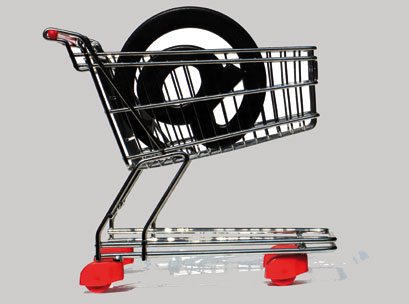There are distinct differences in the development of Internet usage and online retail across Asian countries.
Mobile online retail, for example, has many users in developed markets such as Japan, South Korea and China, while less developed countries are facing low online sales and general Internet problems, says researcher yStat.com.
The Asian region is developing differently in Internet usage and B2C e-commerce. While countries such as Japan, South Korea and increasingly China have strong Internet user rates and increasing B2C e-commerce sales, less developed countries such as Laos and Nepal, have Internet user penetrations of less than 10 per cent. Large markets such as India and Indonesia are also catching up.
In Japan, B2C e-commerce is growing faster than the number of Internet users. Future revenue increases in Japanese B2C e-commerce are predicted to result from higher average spending rather than a growing number of online shoppers.
In 2012, m-commerce in Japan accounted for almost one quarter of all online revenues. This figure also includes mobile payment methods which were frequently used in over-the-counter retail. Rakuten was the most successful player in Japanese B2C e-commerce, based on traffic, followed by Amazon and Nissen.
In Korea, after double-digit growth rates in recent years, B2C e-commerce sales reached more than €10 billion. And more online purchases are conducted using smartphones than notebooks in South Korea.
Besides mobile commerce, social commerce is also a growing trend in South Korean online retail. More money was spent online in the second quarter of 2012, buying travel bookings, clothing and fashion-related goods. Leading companies and websites in South Korean B2C e-commerce were Gmarket, 11st, Shopping.Naver, Interpark, and Cjmall, all mass merchants.
In China, B2C e-commerce is expected to grow by more than 30 per cent annually between 2010 and 2016. B2C e-commerce with luxury goods is one of the leading trends. Overall, fashion, shoes and bags, as well as computers and household appliances are the most popular online product categories.
A growing number of Chinese residents are using social networks to purchase products online, while m-commerce is also gaining in importance, however the ratio of internet users shopping online remains low. Leading Chinese online retailers include Tmall, 360buy, Tencent and Suning.com. Amazon is only in fifth place in China, with a market share of less than three per cent.
Online sales accounted for less than one per cent of all retail sales in India in 2012. Besides travel, online shoppers in India mainly purchased mobile phones (including accessories), computer and game software, entertainment tickets, books/newspapers/magazines as well as travel reservations in 2012. In July 2012, online mass merchant Flipkart had the highest number of unique visitors, followed by Snapdeal, also a mass merchant, and Jabong, an online retailer of clothing and accessories.
In Hong Kong, m-commerce sales are expected to increase notably more between 2011 and 2015 than general B2C e-commerce sales.
Fearing fraud, more than a third of Internet users in Indonesia decided not to shop online in 2012.
In Singapore, ordering online and collecting in person is a growing trend with more pick-up stations planned to be set up by retailers from this year.
The number of Internet users in Taiwan is growing, but more than half of them experienced problems with unstable connections and poor Internet quality in 2012.
In Thailand, the number of Internet users is also rising constantly. Nearly a quarter of the population already uses the Internet there.






